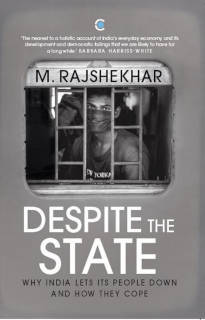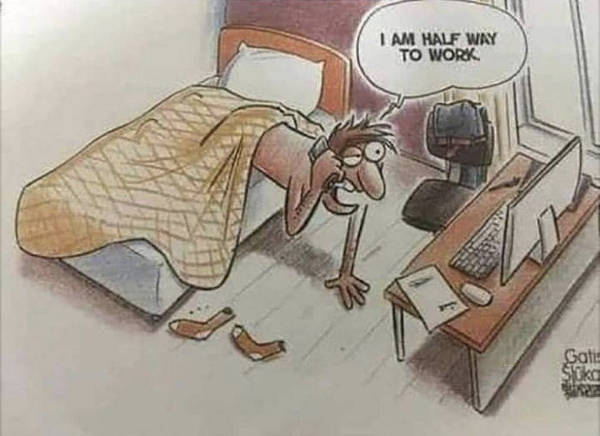[Image by jplenio from Pixabay]
Good morning,
Good leaders possess the ability to examine their fears and deal with it. This is a theme Martin Bjergegaard and Cosmina Popa examine in How to be a Leader. To illustrate how, they surface the story of Jonathan Fields, a lawyer and hedge fund professional in New York City, diagnosed with tinnitus, a condition that causes constant ringing or buzzing in the ears. It can drive one to insanity, and even suicide. His quest for a cure led him to the Sri Lankan Buddhist monk Bhante Henepola Gunaratana. We categorise every perception or mental change into either good, bad or neutral, the monk told Fields. “If the perception is labelled ‘good’, we tend to want to grab and hold on to it or repeat it as often as possible. If something is perceived as ‘bad’, we naturally work to deny and reject the experience.”
“And that is what Jonathan did. Until, underneath the pain, fear and uncertainty, he was ready to discover a new perspective.
“Rather than continuing to reject the sounds in his head, Jonathan started to ask a different question: ‘If this is me, for life, if I have to live with this highly distressing thing and in a state of constant uncertainty of whether it will get better or worse, or if it will ever go away—how can I learn to be okay with it?’
“He began to experiment with blending yoga practice, breathing exercises and what he knew of somatic psychology (a branch of psychology that deals with the mind–body connection), together with a daily mindfulness practice. ‘Mindfulness,’ Jonathan explains, ‘can either be a sitting practice or an approach to everyday life.’ He practised both. And, after many months of daily practice Jonathan noticed that whilst meditation didn’t take the pain away, it did rewire the way his brain processed pain, such that it no longer stopped him from doing what he loved. Just how did he do it?
“Initially the practice was to allow his awareness to focus on the sensations in his body, to notice without judgment, then let them go. ‘Classic meditation and mantra practices encourage you to focus on one sensation—an anchor—and let everything else go. Eventually you can evolve the practice into what is called ‘open monitoring’, where you invite everything in, notice, then let it go, without needing an anchor,’ explains Jonathan….
“It took months of practice, gradually allowing the sound to become the anchor for his meditation. Filled with pain and anxiety, at times unable to breathe, Jonathan continued to practice until one day, as he was sitting, he realized that his mind had gently and quite organically drifted away from the sound. Finally, the quiet inside his mind had returned, if only for a few minutes.
“It takes grit and gumption to go even deeper into the very thing that torments you.”
Have a good day.
In this issue
- The connection between Odisha’s education boom and mining
- Kamala Harris and the rise of the alpha desi female
- Late to work?
The surprising connection between Odisha’s education boom and mining
Here’s a fascinating story from Despite The State: Why India Lets Its People Down And How They Cope by M. Rajshekhar on what drove huge investments into engineering colleges in Odisha in the 2000s. In this extract, he tells the story of a young man who moved from the IT sector to education.

Rajshekhar writes: “Even today, when I look at the transcript of my conversation with Mohanty, I find the numbers scarcely believable. ‘In 2008, twenty-five new engineering colleges opened. The next year, another twenty-five or thirty colleges followed,’ he had said. One reason lay in the students. Attracted by the growth in Odisha’s mining sector and seeing in it the prospect of steady employment and an escape into affluence, demand for engineering education soared in the state through the 2000s. A second reason lay elsewhere: in the circulation of profits from the iron ore boom.
“Once those benefiting from the mining boom decided to invest in land, Soumya Ranjan Patnaik, a former MLA and editor of Odiya newspaper Sambad, told me, they gravitated towards education. It was smart thinking. Land buys could convert black money into white—the initial payment could be made using unaccounted funds, but its subsequent value could be shown as legal. Colleges, apart from conferring respectability, also generated revenues, which opened up bank funding. Additionally, revenues from the college could be used to repay bank loans.
“Within education, funding flowed where investments were low and returns high. Which is why Odisha saw a boom in engineering but not medical colleges. The latter would need parallel investment in hospitals as well. In contrast, the economics of engineering colleges seemed more compelling.”
However, this boom in colleges was followed by a bust. The losers were not the mining barons, but the staff and students. “The miners, business people and politicians who set up colleges had their bottom lines protected. Even if the institution collapsed, the real estate it squatted on would accrete value. The building itself could be repurposed.”
The book has several such stories from the ground, based on extensive reporting by Rajshekhar.
Founding Fuel is organising a special conversation around the theme of Systems Thinking, State Capacity and Grassroots Development. Rajshekhar will be a part of the panel. The conversation will be led by Arun Maira, author, thought leader, industry and policy stalwart, and will have two other respected guests: Mekhala Krishnamurthy, associate professor at Ashoka University, who has done extensive field based research on a range of themes like public health and agriculture over the years, and Harish Hande, co-founder of SELCO India, a social enterprise and winner of the Ramon Magsaysay Award in 2011.
The conversation will take place on January 30 from 3 PM to 4:30 PM on Zoom. We will share the video with you soon after. Watch this space.
Dig deeper
- Read the extract: An engineering college boom built on a foundation of dysfunction
- Read a review of the book: The dirty underbelly of Indian development by Manas Chakravarty
Kamala Harris and the rise of the alpha desi female
Like everyone else, all of us are curious to know more about Kamala Harris, now Vice President of the United States of America. And that is why we found this opinion piece on her by Aarti Shahani in The Washington Post an interesting one. Like Vice President Harris, Shahani was born to migrant parents, writes of the event “as unlikely as the moon landing”, is a journalist and has chronicled the life of immigrants to the country.

“Harris’s mom was no Sita—and for that, I am grateful.”
Her personal narrative is at once funny as it is poignant. “My uncle once threatened to break my mouth because I didn’t go to the kitchen when he’d ordered me to do so.” But that is because she is a desi—like Harris’s mother is. Shahani goes on to describe what a desi means in North America.
“Desi is slang for people of South Asian origin. I love my people, and so I point out lovingly: We are notoriously patriarchal. This isn’t a judgment so much as a statement of fact. Nothing President Trump has said publicly about women rivals the things I’d hear the men and boys in my family say when I was a child. I will not repeat the smut. But I will summarize the key message: While men are allowed (and even expected) to be vulgar; an outspoken girl or woman is a liability, an animal to be domesticated.”
She then turns her commentary to Harris’s mother Shyamala Goplanan and why this matters. “She was supposed to return to India to marry a member of her own caste. But she defied that order. Shyamala Gopalan chose a partnership that broke all the rules. Decades before Mississippi Masala depicted Brown and Black love on the big screen, she married a handsome young scholar from Jamaica. They wed, and she gave birth to Harris the same year she completed her PhD, at age 25. ‘Her marriage was as much an act of rebellion as an act of love,’ Harris writes in her memoir, The Truths We Hold.”
Dig deeper
Late to work?

(Via WhatsApp)
Tell us what you think and find noteworthy. Head over to our our Slack channel.
And if you missed previous editions of this newsletter, they’re all archived here.
Bookmark Founding Fuel’s special section on Thriving in Volatile Times. All our stories on how individuals and businesses are responding to the pandemic until now are posted there.
Warm regards,
Team Founding Fuel
(Note: Founding Fuel may earn commissions for purchases made through the Amazon affiliate links in this article.)


